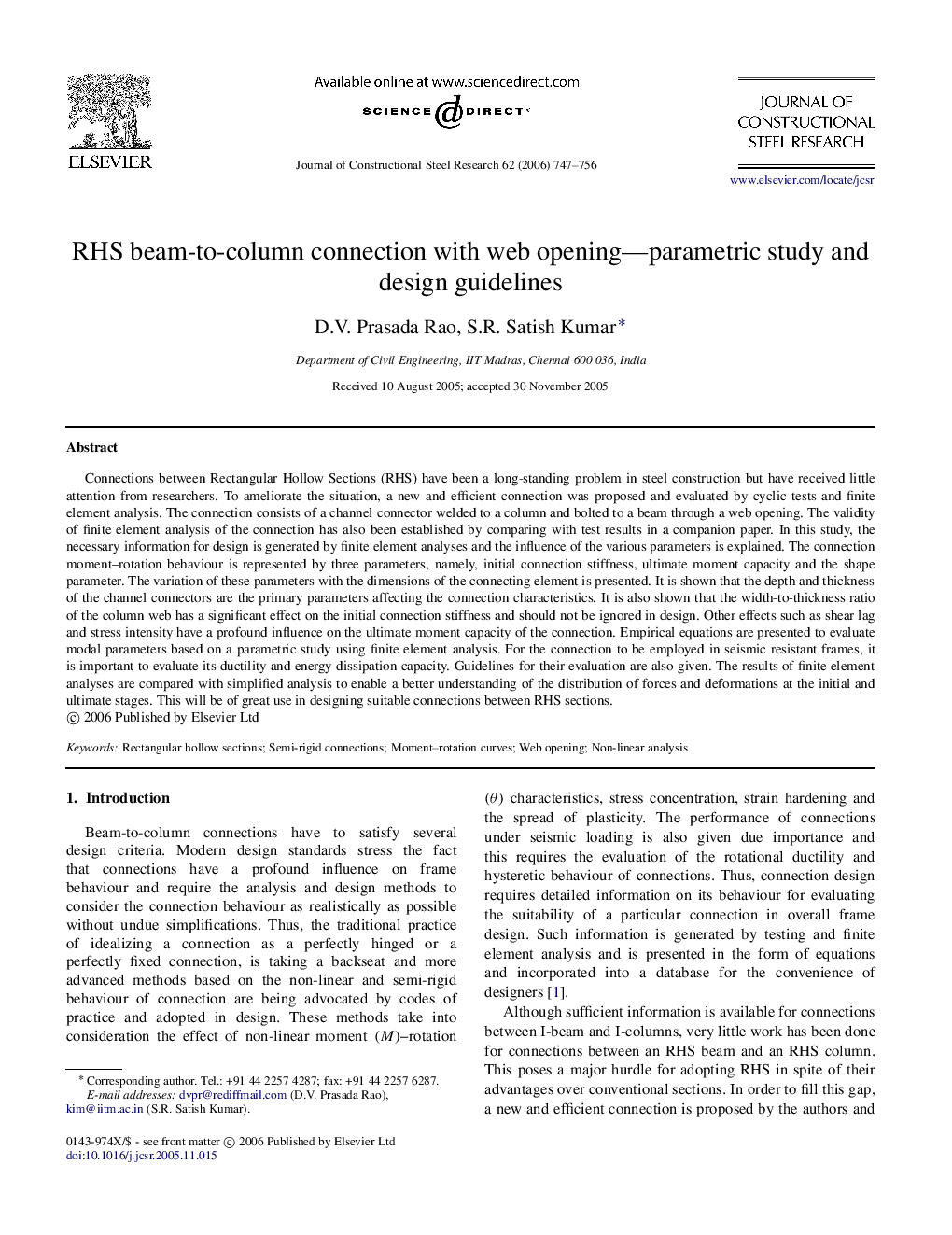| Article ID | Journal | Published Year | Pages | File Type |
|---|---|---|---|---|
| 286355 | Journal of Constructional Steel Research | 2006 | 10 Pages |
Connections between Rectangular Hollow Sections (RHS) have been a long-standing problem in steel construction but have received little attention from researchers. To ameliorate the situation, a new and efficient connection was proposed and evaluated by cyclic tests and finite element analysis. The connection consists of a channel connector welded to a column and bolted to a beam through a web opening. The validity of finite element analysis of the connection has also been established by comparing with test results in a companion paper. In this study, the necessary information for design is generated by finite element analyses and the influence of the various parameters is explained. The connection moment–rotation behaviour is represented by three parameters, namely, initial connection stiffness, ultimate moment capacity and the shape parameter. The variation of these parameters with the dimensions of the connecting element is presented. It is shown that the depth and thickness of the channel connectors are the primary parameters affecting the connection characteristics. It is also shown that the width-to-thickness ratio of the column web has a significant effect on the initial connection stiffness and should not be ignored in design. Other effects such as shear lag and stress intensity have a profound influence on the ultimate moment capacity of the connection. Empirical equations are presented to evaluate modal parameters based on a parametric study using finite element analysis. For the connection to be employed in seismic resistant frames, it is important to evaluate its ductility and energy dissipation capacity. Guidelines for their evaluation are also given. The results of finite element analyses are compared with simplified analysis to enable a better understanding of the distribution of forces and deformations at the initial and ultimate stages. This will be of great use in designing suitable connections between RHS sections.
